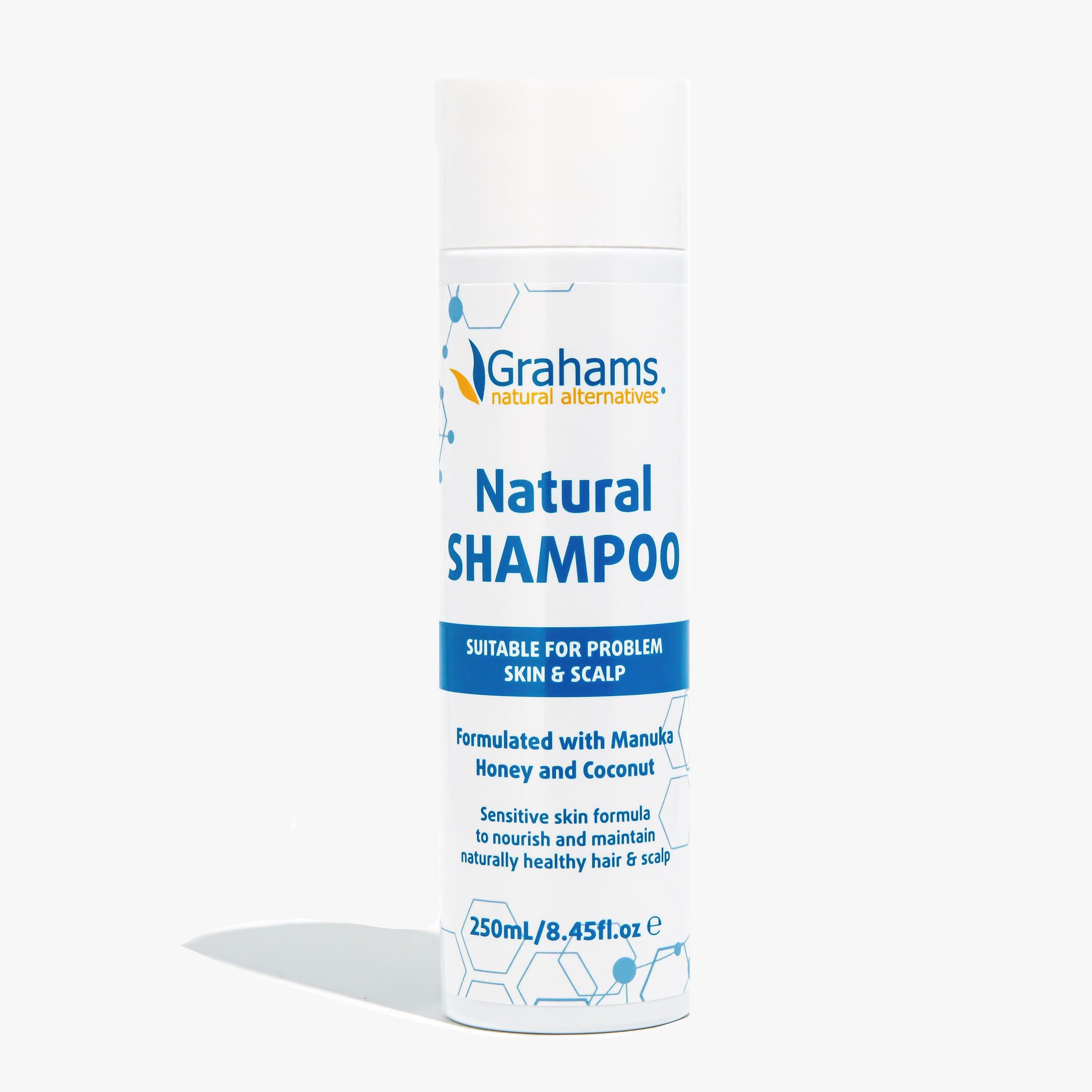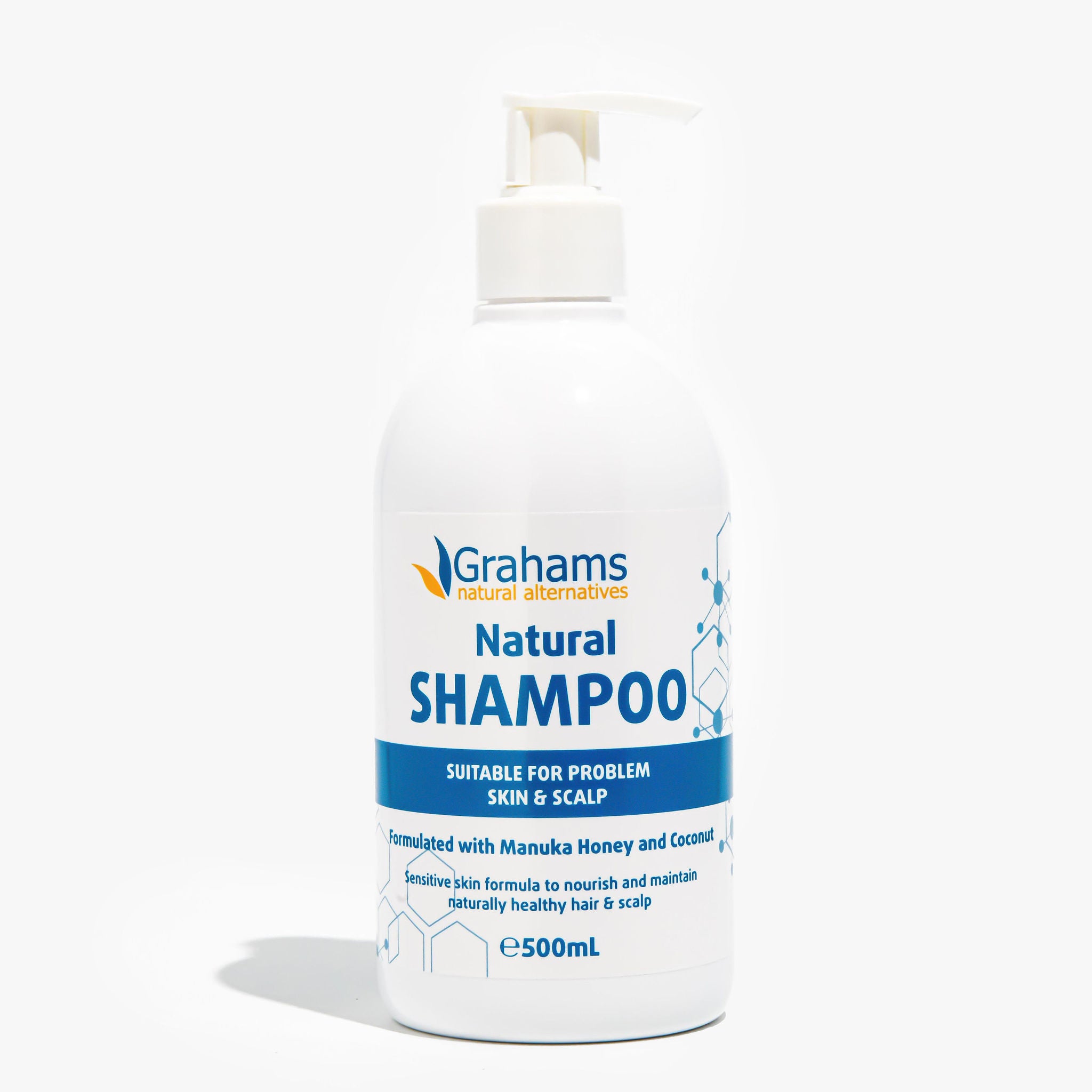Natural Shampoo
- Regular price
-
$14.99 - Regular price
-
- Sale price
-
$14.99
Couldn't load pickup availability
Unlike many store bought products, Grahams Natural Shampoo is free from sulphates and harsh ingredients that can dry out and strip your hair and scalp.
Infused with moisturising jojoba oil and coconut extract, this shampoo will nourish and condition your scalp while working to repair dry and damaged hair!
Added olive oil will help strengthen hair, reduce frizz and add shine, while the Manuka honey adds a refreshing scent to invigorate the senses.
Available at: Chemist Warehouse Australia
BENEFITS
At Grahams Natural, we understand the importance of using natural and safe ingredients on your hair and scalp. Our Natural Shampoo is free from artificial fragrances and harsh additives, ensuring a gentle cleansing experience.Whether you have a sensitive scalp or have dry, damaged or normal hair, our Natural Shampoo is designed to provide the care and nourishment your hair deserves. Pamper yourself with a luxurious and invigorating hair care experience.
Experience and indulge in the benefits of our unique blend of botanical extracts, including Aloe Vera, Chamomile and Calendula. These ingredients work together to cleanse and nourish your hair, leaving it feeling refreshed, hydrated and manageable.
Say goodbye to dull & lifeless hair. Our Natural Shampoo revitalises your locks, enhancing shine and promoting healthier-looking hair from root to tip. The gentle formula respects the natural balance of your scalp, reducing irritation and dryness.
INGREDIENTS
Water, Sodium Lauroyl Sarcosinate (naturally derived), Caprylyl Capryl Glucoside Glycerin, Hydroxypropyl methylcellulose, Coco-glucoside, Jojoba seed oil, Coconut oil, Olive leaf extract, wheatgerm oil, Tocopheryl Acetate, Olive oil, Chamomile flower extract, Panthenol, Manuka Honey, Potassium Hydroxide, Citric Acid, Potassium Sorbate, Sodium Benzoate, Natural Coconut Fragrance
HOW TO USE
Incorporate this shampoo in to your daily shower routine. Massage the shampoo into the hair and scalp working into a lather.Rinse thoroughly.
Follow with the Grahams Natural Conditioner
For Dandruff
If you are suffering with dandruff, we recommend using the Dandruff Relief Pack which includes our Scalp Relief Shampoo & Scalp Relief Cream.
For Scalp Psoriasis
If you are suffering with psoriasis on your scalp, we would recommend the Scalp Psoriasis Pack which includes our Scalp Relief Shampoo in combination and our Psoriasis Cream.
SHIPPING
Free shipping over $95 (Australia)
Standard shipping from $9.95
Express shipping from $12.95



Natural Shampoo
- Regular price
-
$14.99 - Regular price
-
- Sale price
-
$14.99
It has a 100/100 on Yuka for ingredients and a 100/100 review from me. My hair was so damaged from products supposably meant for hair thickening. When looking further into the ingredient list I was killing my scalp and hair. Been using this for some months now, and my hair dressers and I have noticed a lot of new hair growth. I am very happy with how my hair feels and that I am not full of harmful poisons anymore. Thanks for making such a good product!
Would love to see it in bigger bottles so there is less waste. Oh and your soap is amazing for my skin too. winner winner chicken dinner.
I have been dealing with hair fall and this shampoo really helps to combat this. I found that when I use other shampoos in the shower, a few strands will usually fall. When I use this shampoo, I lose only half the amount I usually do so around 1-3 strands maximum. This is huge because experiencing hair fall in the shower is normal, but I’m amazed at how little hair is falling when I consistently use this product! I have very fine hair and this has saved my scalp. I always feel like my scalp gets a great clean after using this shampoo. It also smells amazing which is a bonus! It smells like coconut but the scent is not overbearing at all. This product was recommended to me in NSW at a Chemist Warehouse store! I highly recommend this product!



